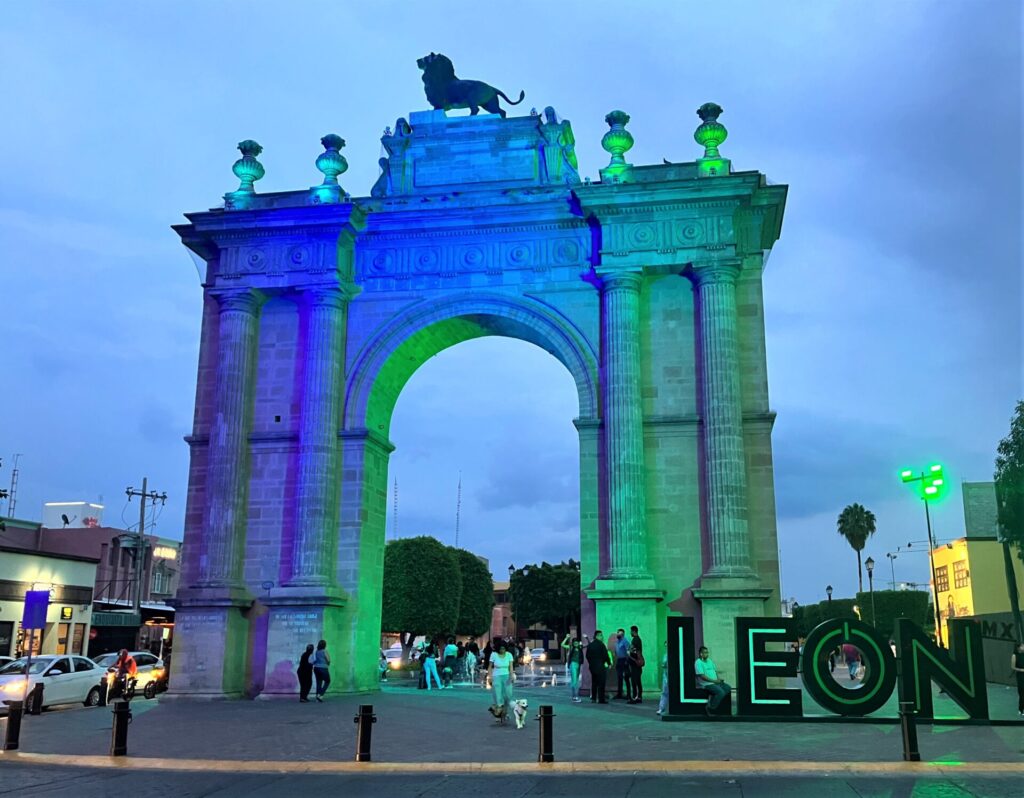
León is a city of 1,700,000 and the fourth largest in Mexico. But it doesn’t feel that big. There are few high rises and no areas with concentrated population density. Instead, the houses sprawl out along the arid plateau, filling up the space toward the nearby mountains. Situated at 6000 ft above sea level, the elevation helps keep the weather more temperate compared to the coastal areas. León is not a big international tourist destination, but it gets its share of local tourism. Specifically, shoppers in search leather goods, which are the specialty here.
We flew into the closest airport, Guanajuato International Airport (BJX), which is about a 45 minute bus ride away from León. Our arrival was such a pleasant experience, I’m still a bit shocked. It was the exact opposite of flying into a tourist center like Cabo, Puerto Vallarta, or Cancún. In those places, as soon as you leave the secured baggage claim area you get swarmed by taxi hawkers and tour sellers. It’s an assault on the senses and can be a very overwhelming introduction.
In stark contrast, after our arrival in BJX, we walked out with our luggage, stopped at an ATM for pesos, left the terminal and found the bus stop, all without even a single offer of a taxi. (There were taxis available, but you had to approach them!) And then, the bus that runs every half hour left 2 minutes after we got there. It was a delightful and unexpected way to begin our time in Mexico.
Leather District (Zona Piel)
Upon arrival in León proper, we stepped out of the bus station and into the center of the Leather District. As we walked down the street, the enticing scent of fresh leather wafted out onto the sidewalk from the many, many shops. It made for a very nice continuation of our first impression. That also marked the end of our inconspicuous tourist experience though, as we had to dodge many offers of “Botas amigos, botas? Boots?” It’s not actually that bad. They do take “no” for an answer. It’s just that you have to answer it constantly as there are so many shops.
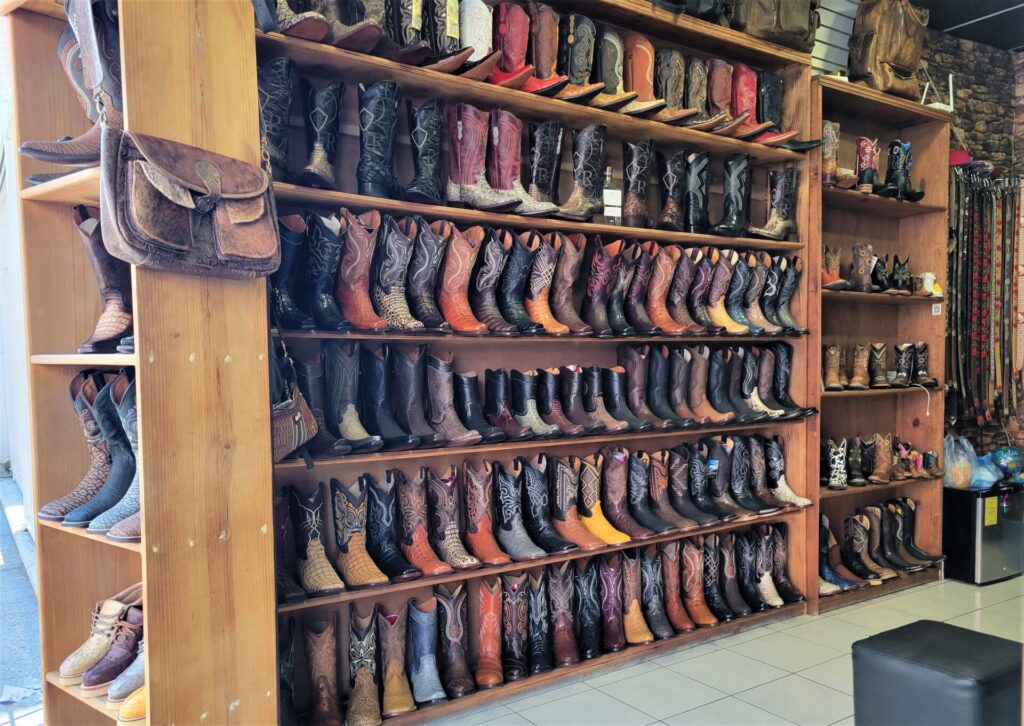
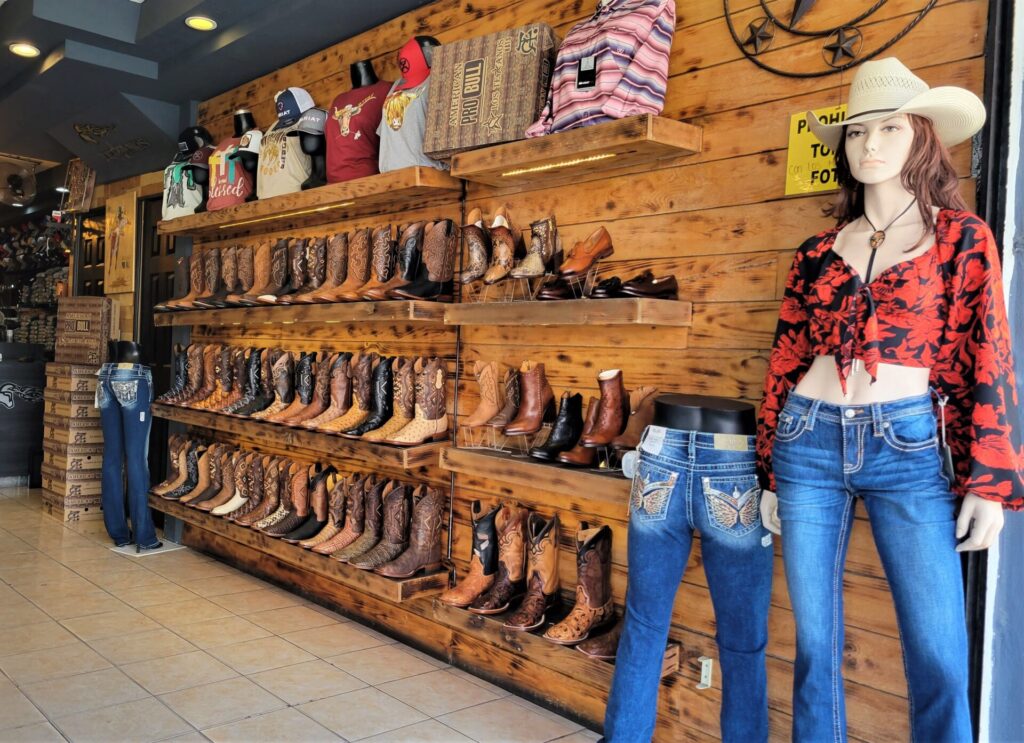
But if you are ever in the market for leather goods, especially cowboy boots, León is the place to get them. There have to be a hundred shops selling just boots. Many are custom made and quite fancy. If boots aren’t your thing, there are also many shops selling gorgeous leather shoes. Athletic shoe stores are popular too, most selling knock-off Nikes, Adidas, and other name brands. It feels like there are enough shoes for sale in this district to supply the whole country. While footwear rules the district, there are also scores of leather bags, belts, jackets, fanny packs, wallets, and even horse saddles to be had. It’s a pretty impressive scene and a fun place to walk around gawking at (and smelling) all of the goods.
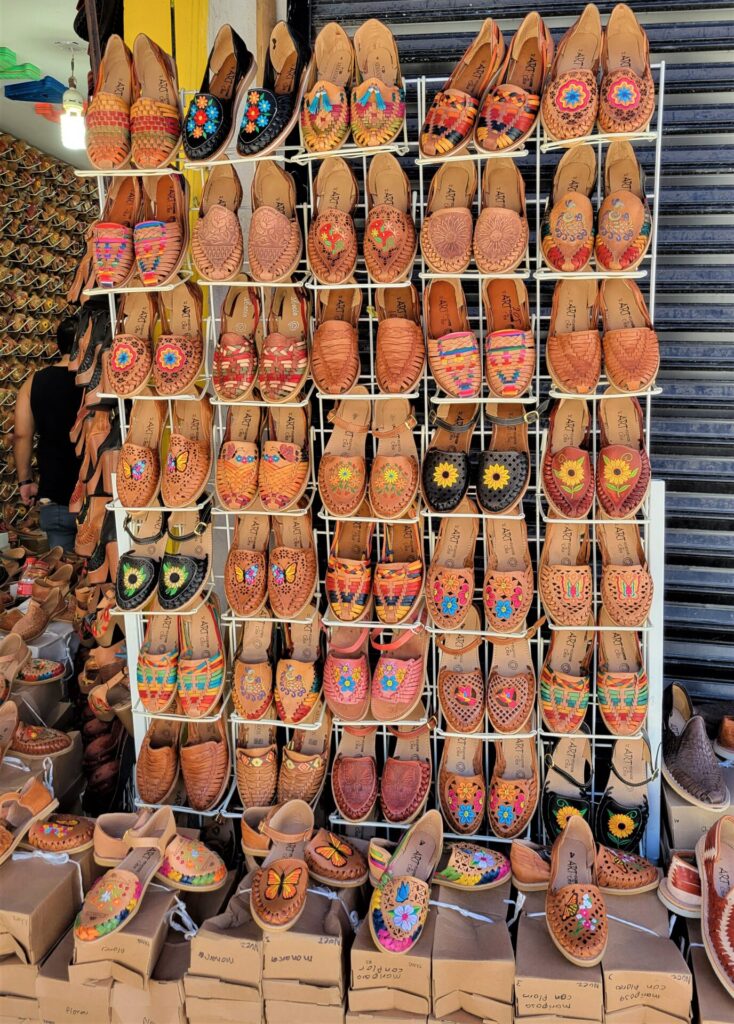
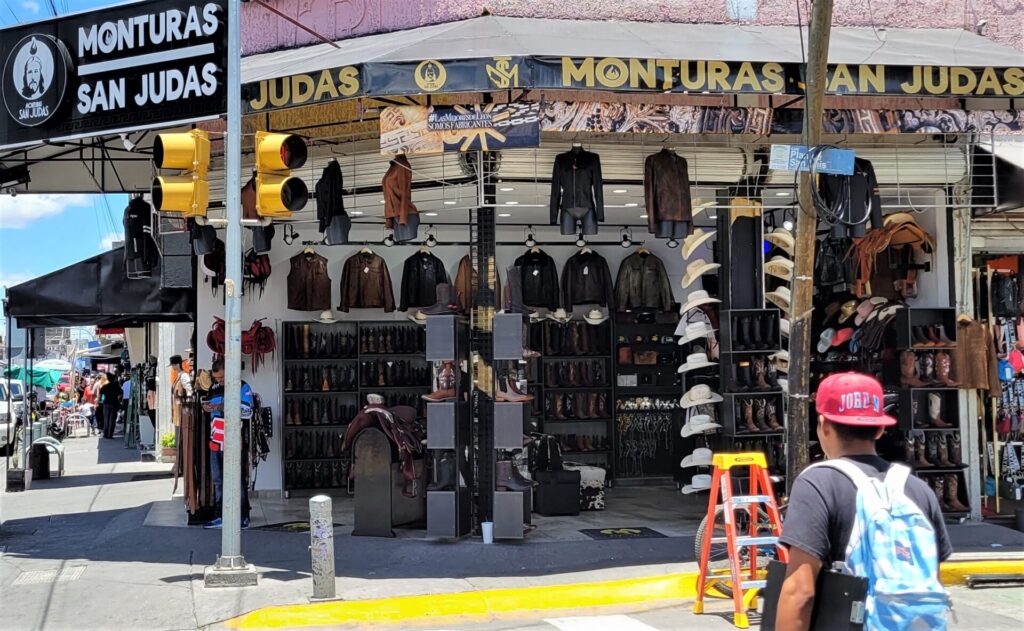
Heat Wave
We arrived on June 11th in the middle of a heat wave. It was stifling, with daily highs in the upper 90s (36C) and relentless sun. It’s a dry heat, which helps a little, but we definitely were out of practice in dealing with weather this hot. It wasn’t until about 2 weeks into our stay that we finally got some relief and a return to more expected temps.
Historically, the hottest months of the year in León are April and May, and they still average less than 90 degrees (32C), partially due to the 6000 ft elevation. June is supposed to be cooler and the climate summary on the León wikipedia page shows that the average high in June is 85.8 (30C). Unfortunately for us, we didn’t experience a single day at or below the normal June average until June 30th.
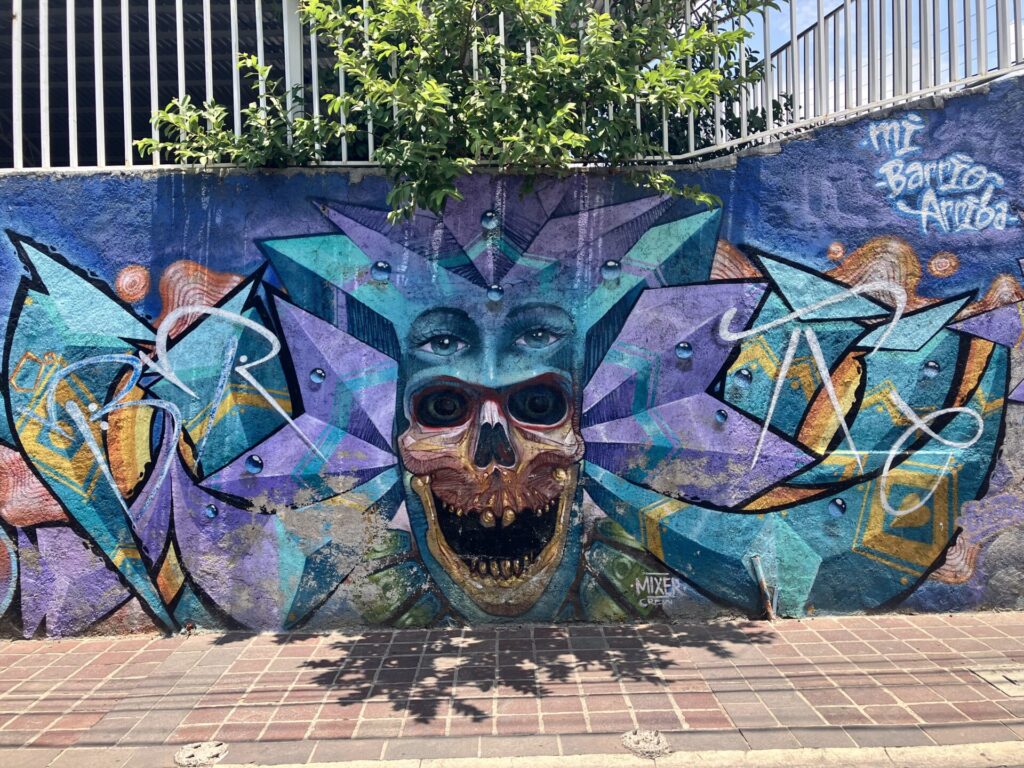
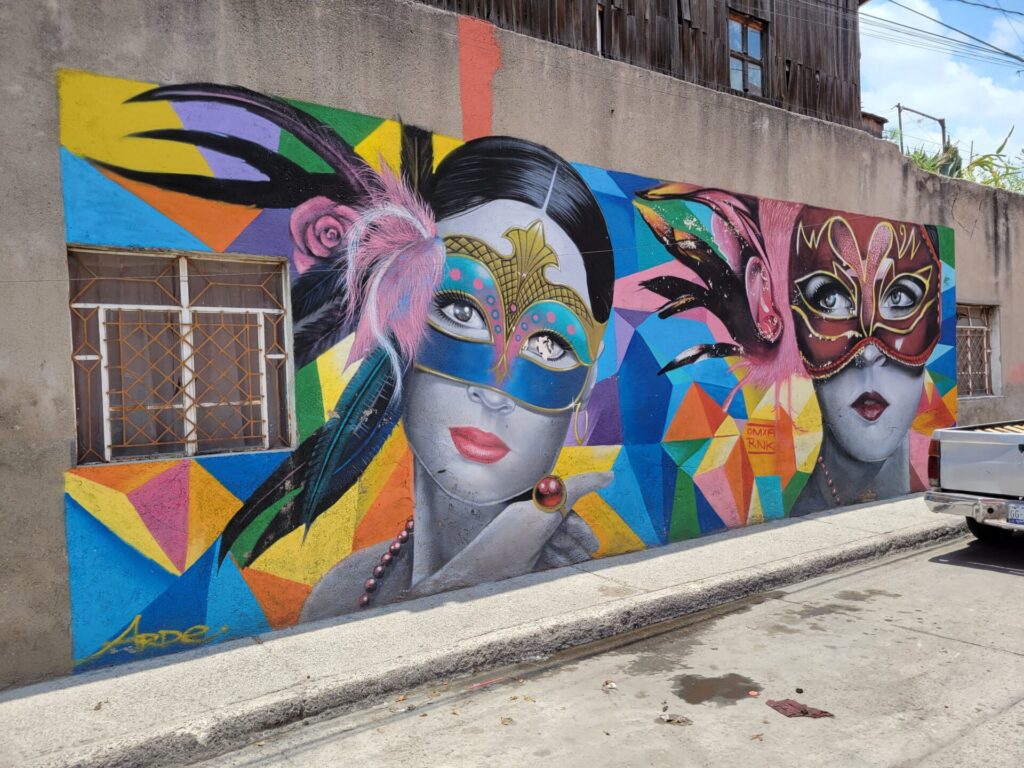
That made me double check my research on this and I realized that the data on that wiki climate chart was only collected through 2010. I guess ignoring the last 12 years will certainly skew the averages lower! It seems like climate change has extended much of the hottest May weather into June, at least for this year. Thankfully our Airbnb had an A/C unit for the bedroom, so we could at least get some sleep at night.
Fresh Tortillas
One of my favorite parts about Mexico is the abundance of tortillerías, where fresh, hot tortillas roll off the assembly line all day long. Sometimes you can hear the tortillerías before you can see them. The tortilla making equipment often has a distinct rhythmic squeaking sound, like the worn out serpentine belt in an old car engine. The closest tortillería to our apartment was tucked into a neighborhood street between houses and I’d have never found it if I hadn’t looked it up on the map.
My first time there I was greeted with a single word – cuantas? – which means how many. Good question! I don’t know, I hadn’t thought about that before I stepped up there. So I answered with veinte, or twenty. She looked at me slightly inquisitively and repeated it back to me, veinte? I said Sí, veinte. Okay. So she gathers my tortillas, weighs them, then sits them down on the counter in front of me. Then she just stares at me and waits. So now it was my turn to ask her, cuantas?, which also means how much. Veinte, she answers slightly incredulously. Ah, sí. Isn’t that convenient? Twenty tortillas for twenty pesos. Cool! I paid, thanked her, and left.
It wasn’t until later when I realized that I screwed this up. We had way more than 20 tortillas. That’s because they sell them by the kilogram, not the individual tortilla. Obviously this gringo didn’t want 20 kilos, so she did the math and gave me about 900 grams, which totaled to 20 pesos. So basically I told her how much I wanted to spend, and then asked her how much it cost. Duh!
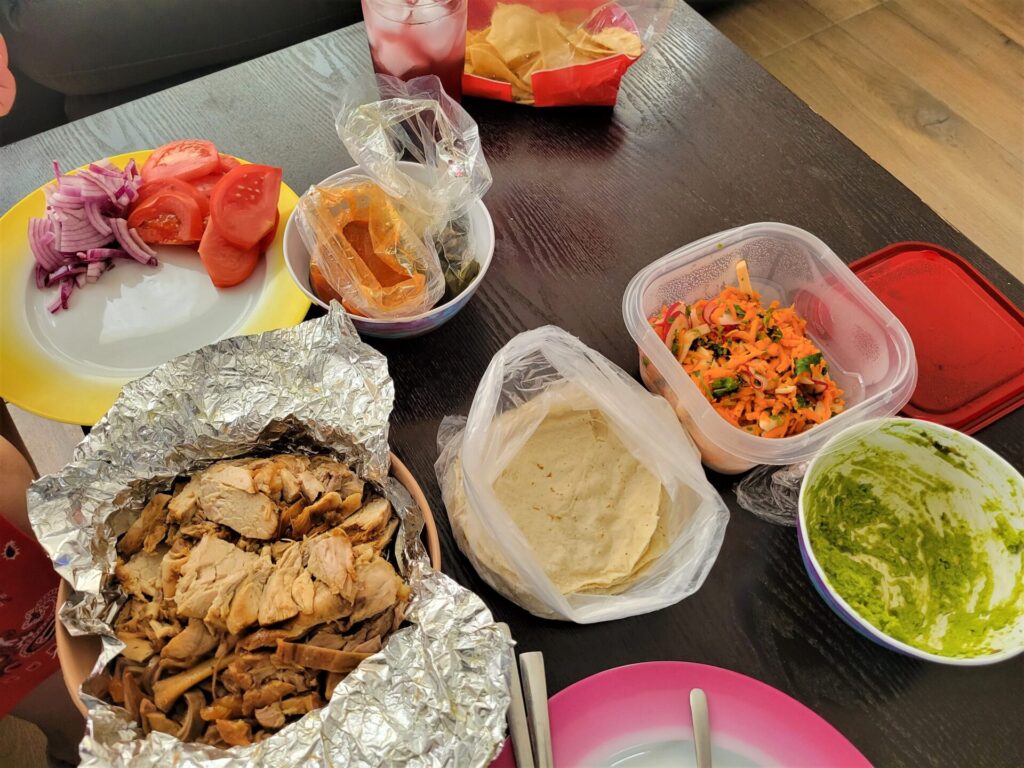
The next time, I was more prepared and asked for a half kilo (un medio kilo), which turns out to be about 30 tortillas. That costs 11 pesos, which is about $.60 in USD. It’s almost criminal that something so delicious can cost so little. I think you could put an old dried up piece of beef jerky in a fresh tortilla and it’d still be delectable. However I didn’t test that theory, preferring to fill mine with mouth-watering carnitas.
Language Barrier
The tortillería was our first foray into butchering the Spanish language, but definitely wouldn’t be the last. León has definitely challenged our remedial Spanish skills, as there are not many English speakers around. I have a slight background in the language, as I took a couple of years of Spanish in high school, although obviously that was a long time ago. Katie and I had also been practicing on Duolingo for the few months prior to our arrival. Overall, I’d say we have a decent grasp of the basics, but still struggle with normal interactions. I can speak to people okay, but processing their responses is quite difficult. Spanish speakers speak so fast. So fast. But there’s no better way to improve than to continue to be immersed in the language, which we plan to do for the remainder of the year.
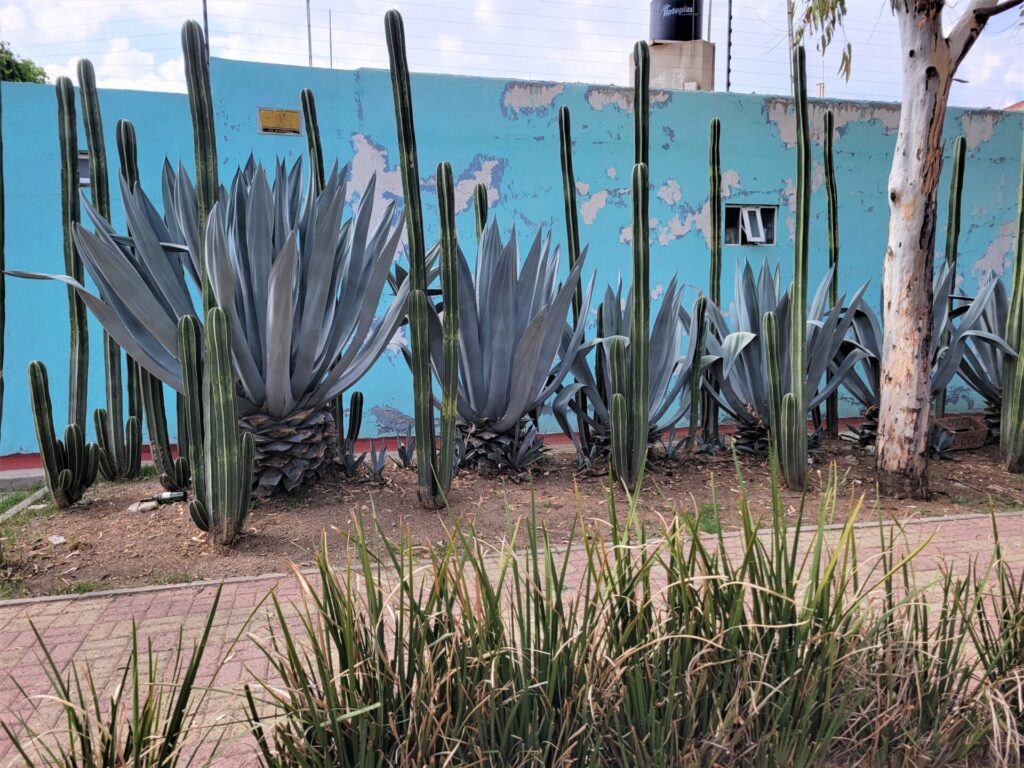
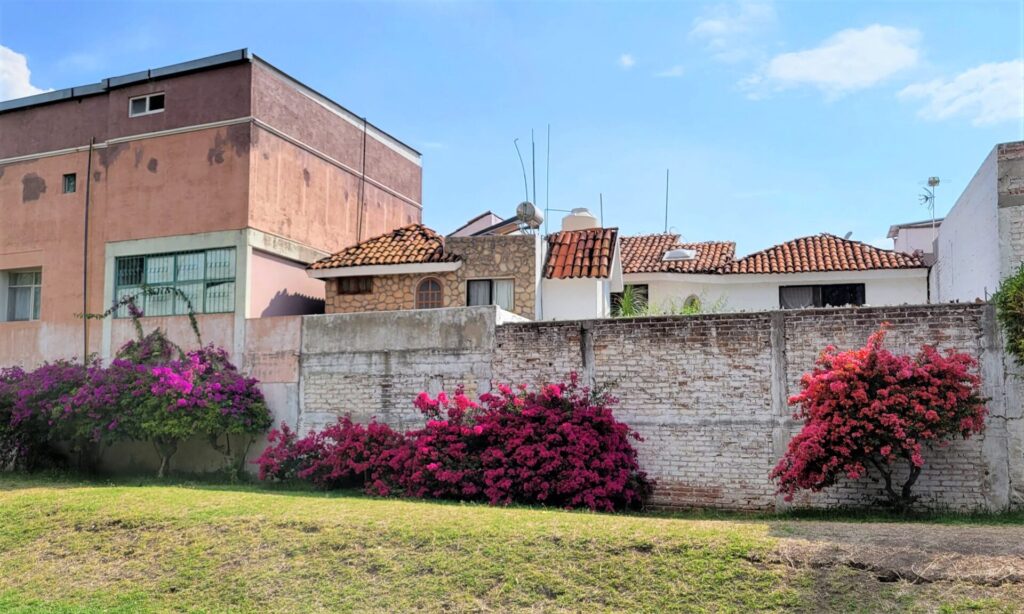
Our Welcome Wagon
On one of our first days in León, we were walking in the downtown area and got approached by a man on a bicycle. He rode up and excitedly asked if we spoke English. “Yes? Welcome to León! Welcome to Mexico! I’m so glad you’re here. Where are you from?” We told him. “Oh that’s great. I have some family there! I have some bad news for you though. <dramatic pause> I’m one of those Jehovah’s Witnesses.”
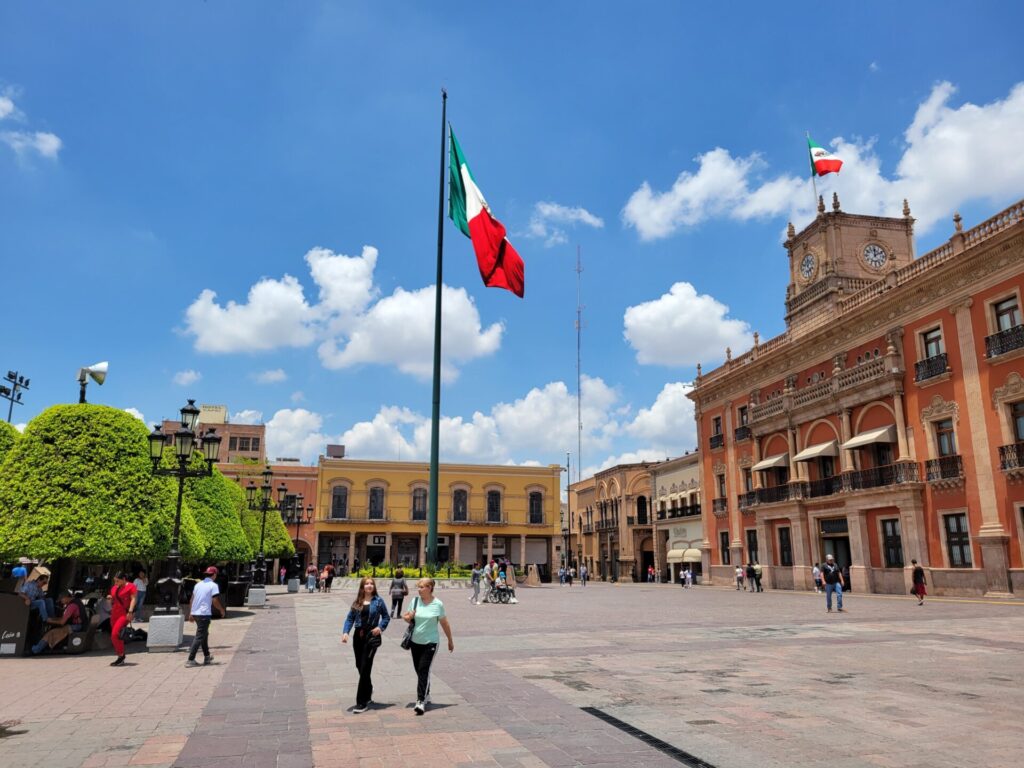
Just our luck! We finally found someone who spoke perfect English and he’s a proselytizer. But he was actually really nice about it and wasn’t pushy at all. He just asked if we had any questions, which we declined, and then he again enthusiastically welcomed us to León before pedaling off. His humorous approach and genuine welcome made it a memorable interaction, but it just goes to show that it’s not always advantageous to have people speak your language.
León Bravos Baseball
They play summer baseball here and we treated ourselves to a game. The León Bravos are an independent professional baseball team in the Mexican League, which has 18 teams and a 3 month long regular season. The stadium holds about 6500 people, and it was around half full for the Wednesday evening game we attended. But let me tell you, those 3000 attendees were stoked to be there. It was quite a raucous atmosphere. They played music not only as batter walk up songs, but also between pitches. There were lots of coordinated cheers, some led by regulars in a section where they played drums and waved flags. Almost all of the fans seemed really into the game.
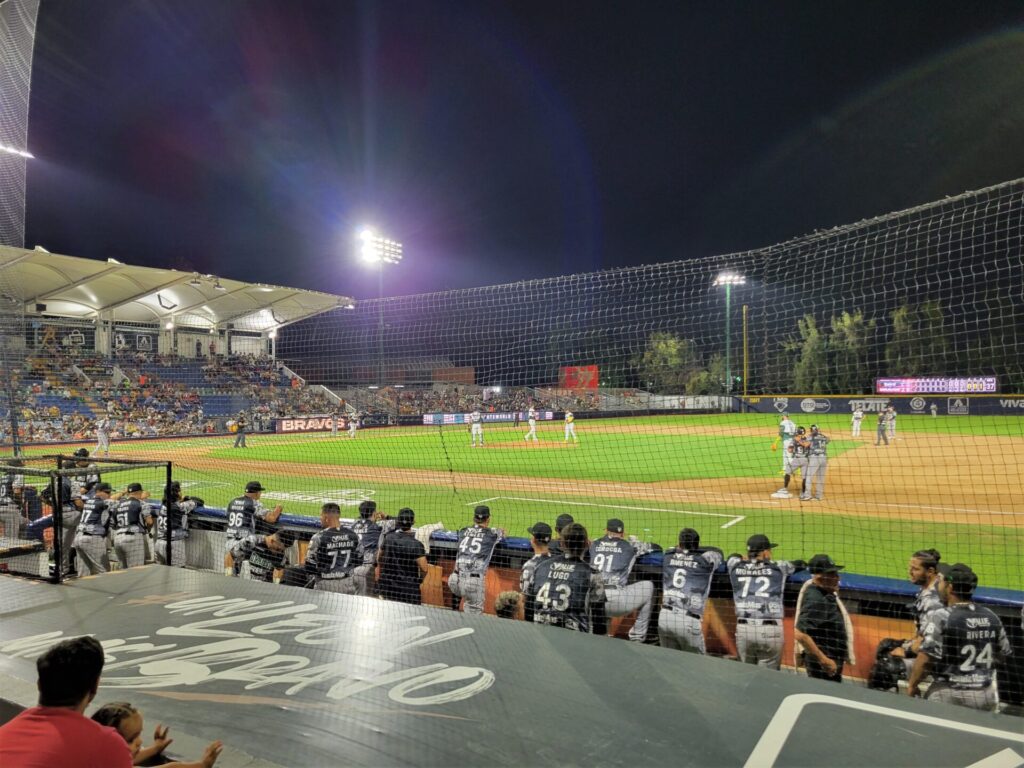
Even when there wasn’t on the field action taking place, something was happening every half inning to keep people entertained. On the field there was a tug of war, a foot race, and a sumo-style match where the two participants were encased in inflated plastic cylinders and had to try to knock the other down. The jumbotron had kids competing on the Emoji Cam, where they had to make faces to match different emojis.There was a kiss cam and an air guitar cam too. They did the wave. It was constant entertainment, and the atmosphere in the stadium was pretty electric.
And in between all of this, they played some pretty good baseball at a higher level than I was expecting. The opposing pitcher was regularly touching 95mph with his fastball. We saw a couple of really nice defensive plays too. We did some research and found that a number of the players on both teams were drafted by MLB teams at one point.
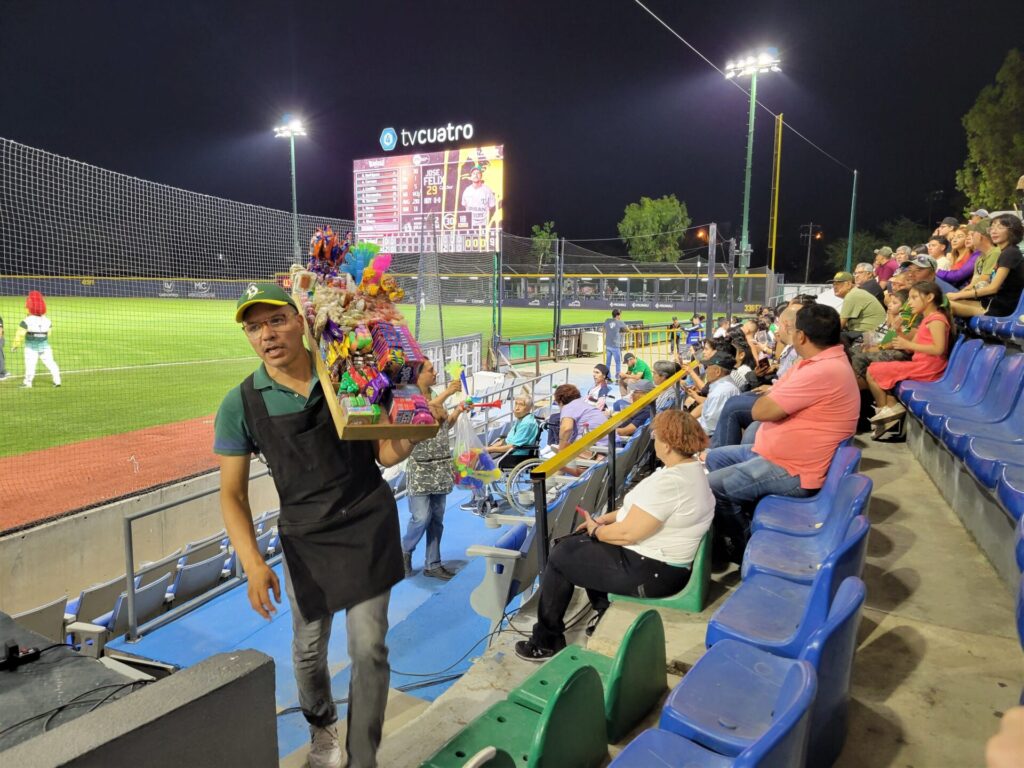
The only downside was the seating wasn’t all that comfortable. The plastic seats are just bolted to the concrete and don’t fold, so you can’t actually squeeze by the people in your row. That’s because even if they stand up, they can’t move back. What that means is that once you get to your seat, you’re pretty much there for the duration. To make up for that, everything that is sold at a concession stand was available via vendor in the seating area. You could get tacos, tortas, popcorn, chips, candy, and about a dozen other things to eat. They also had micheladas, beer, sodas, water, and probably other things to quench your thirst.
So while we couldn’t really get in or out, at least we had everything available to us that we would want. Nevertheless, the uncomfortable seating arrangement was only a slight detraction to an otherwise very entertaining evening. I had a recurring ear worm of Vamos Bravos (clap, clap, clap-clap-clap) in my head for a few days following our outing, but it was totally worth it.
Expiatorio Cathedral
The center of town features the striking Templo Expiatorio del Sagrado Corazón de Jesús, or the Expiatory Temple of the Sacred Heart of Jesus. That’s quite the handle, but it’s a very impressive church with a neo-gothic design that makes it look like it could be situated in any Western European capital. The cathedral draws both the devout and people like us to see both the outside and inside of the intricate structure. It’s free to visit anytime the doors are open. Which are also quite impressive, made of bronze formed into allegorical scenes.
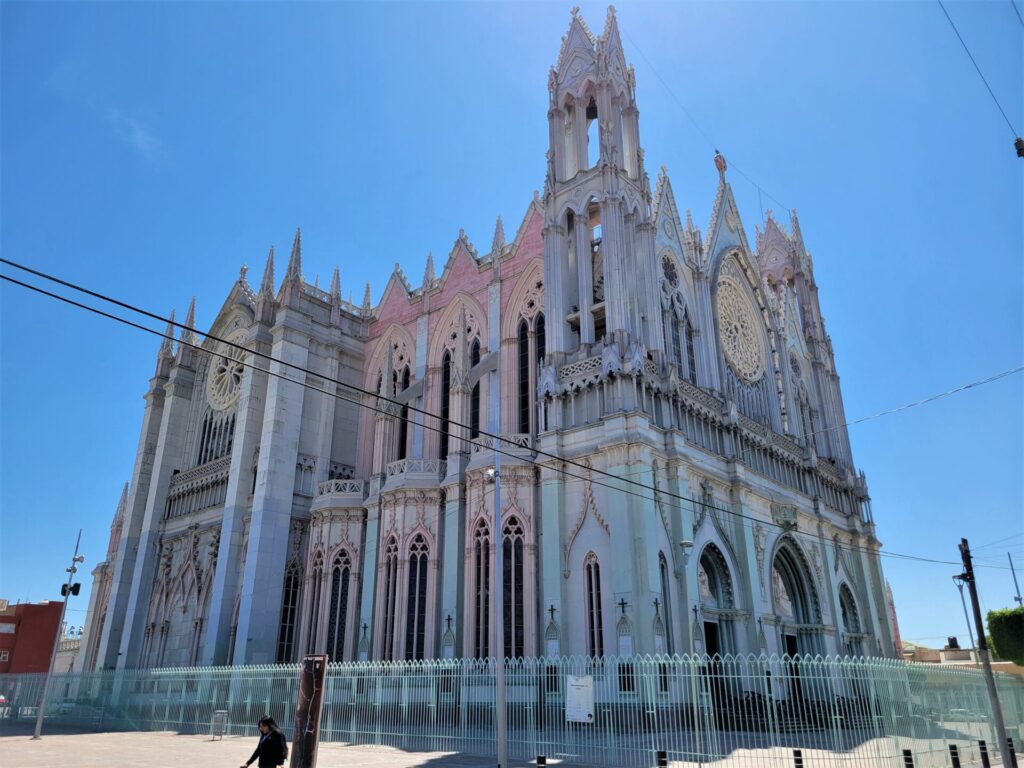
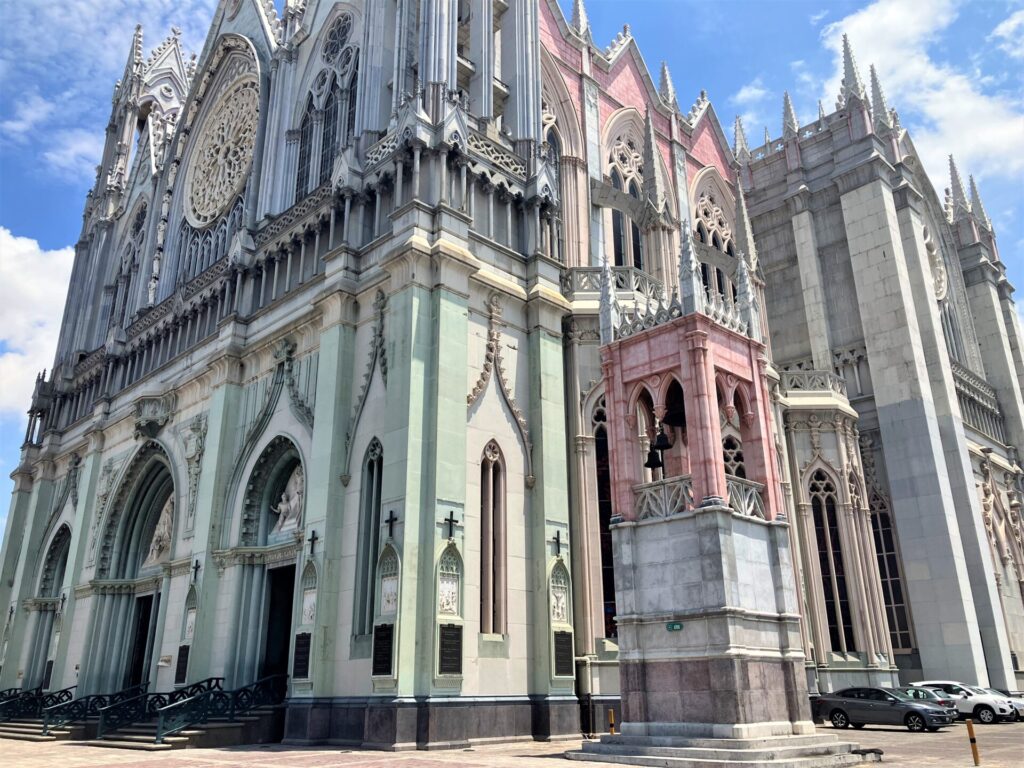
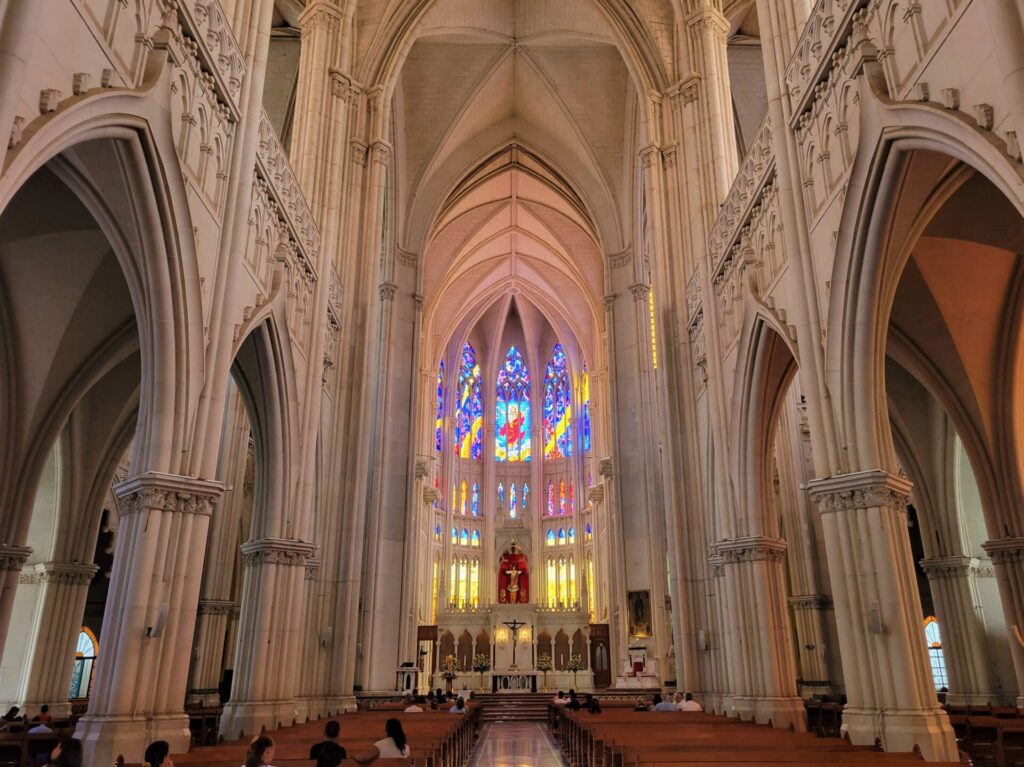
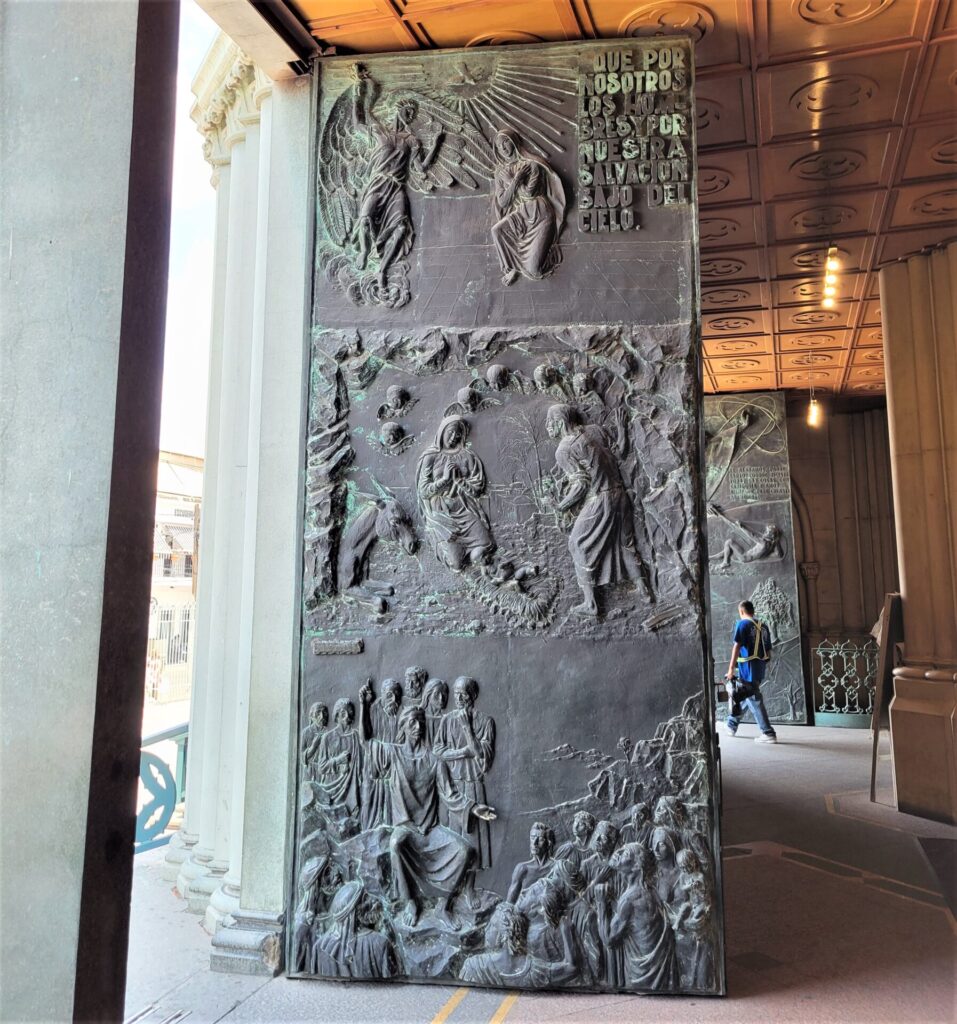
Birdwatching
We stayed close to one of the few large parks in town. A lot of time was spent getting to know the local birds, especially since they were all new to us. Our favorites were the Golden-fronted woodpecker and the Vermillion flycatcher. The flycatcher especially was very entertaining, as they conspicuously sit on low branches and their bright red coloring makes them easy to spot. They constantly swoop to catch flies and other small bugs. Most of the time that’s on the ground, quickly returning to their perch to repeat the process. But sometimes they go on a chase through the air, their red bodies bobbing and weaving at top speeds before catching (or losing) their morsel.
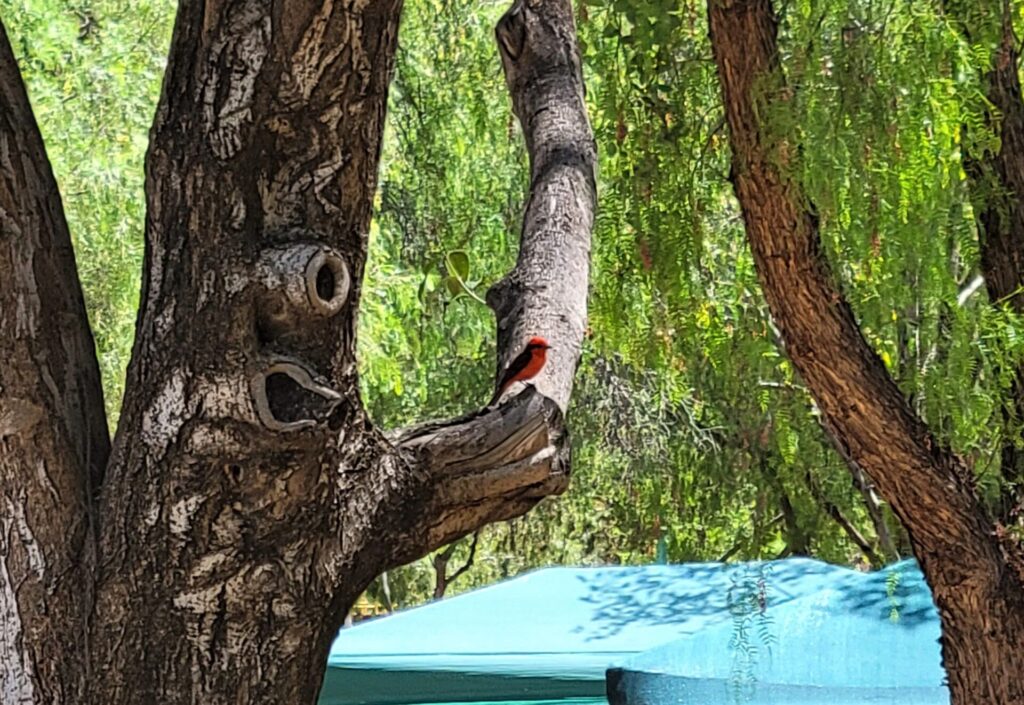
Food
We ate really well, taking advantage of all of the Mexican food items that we hadn’t had in a long time. I wouldn’t doubt that every meal involved either a mango or an avocado. We lugged at least 3 watermelons home from the store. We also had access to papaya with passion fruit for the first time since we were in Asia, which is one my most favorite pairings. A large number of tacos were consumed, mostly filled with delicious carnitas. And we started more days than not with some delicious Mexican pan, which just means “bread”, but there are a hundred different varieties and most are wonderful. And we cooled off with plenty popsicles (paletas de agua) which are made with fresh fruit in dozens of different varieties.
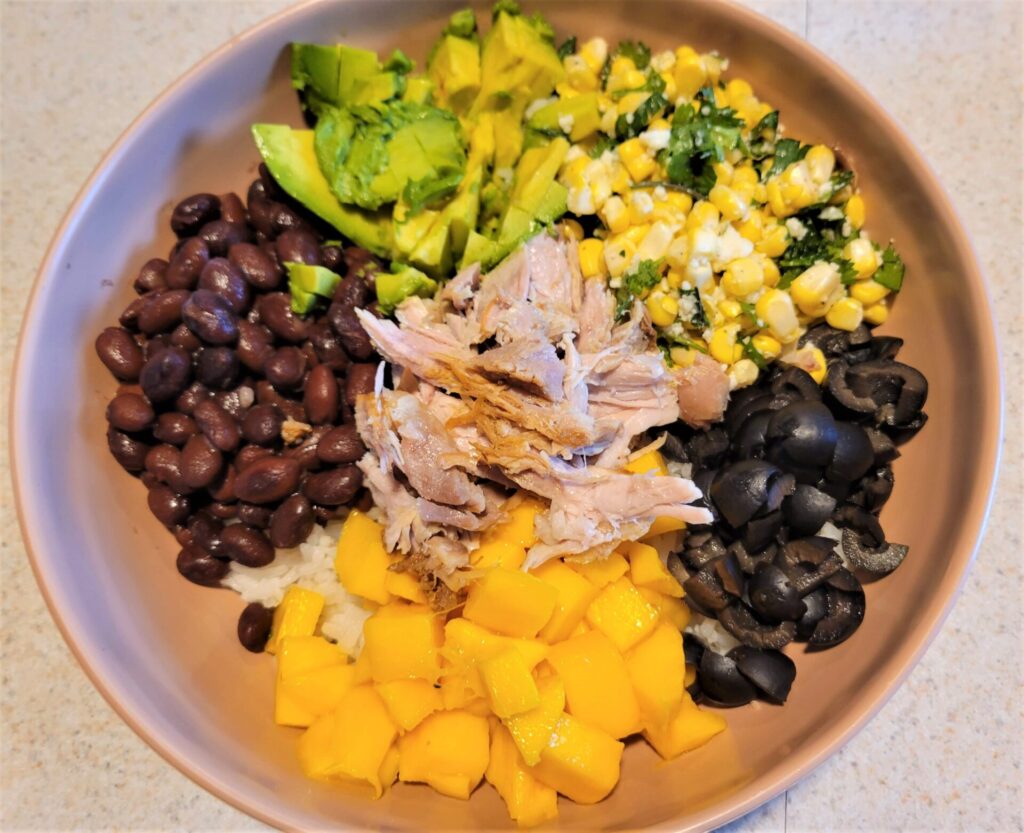
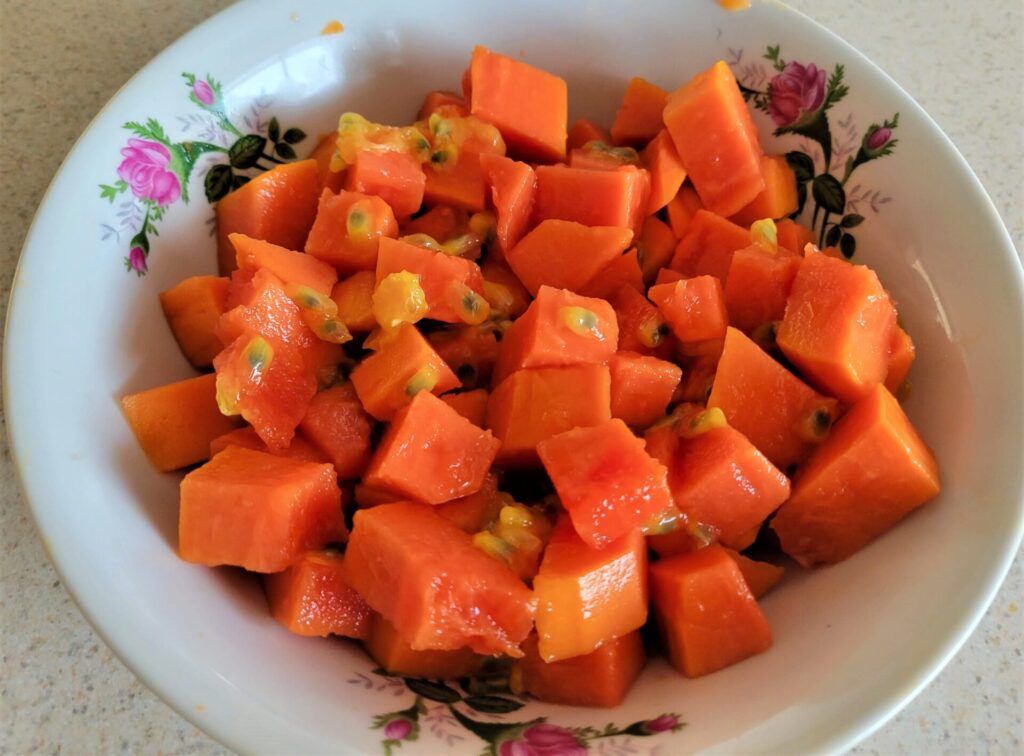
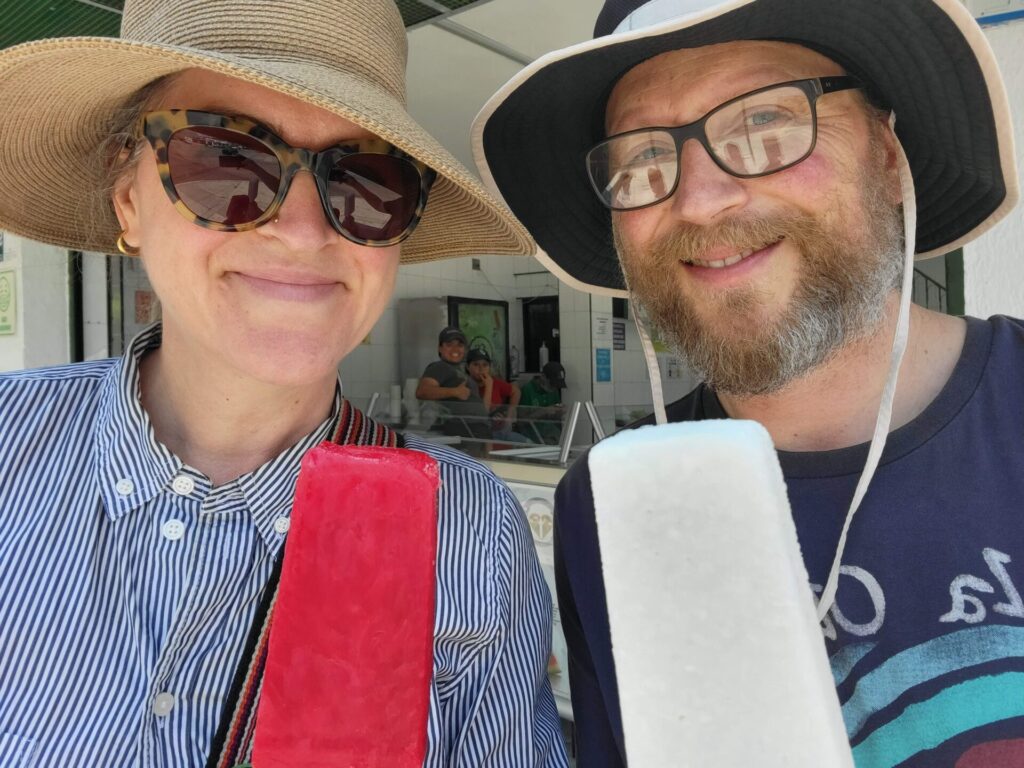
A Word On Safety
Despite the fact that Mexico is the sixth most visited country in the world, receiving nearly 40,000,000 international tourists last year, many Americans believe that the entirety of Mexico is unsafe for travel. Some of those Americans are my relatives. This perspective is usually due to the consumption of too much TV news and ignoring how large and diverse the country of Mexico actually is. While there is no denying that Mexico has serious problems with cartel violence, almost all of that violence is focused in areas that tourists, including us, have no reason to visit. That’s no different than visiting cities in the US, where we also avoid areas of concentrated violence.
To help us know what areas to avoid, the US government publishes a list of specific areas that government officials aren’t allowed to travel. We use that as our guide as well. I also like to check the travel recommendations of the UK government, as they tend to be a little less alarmist. Between the two, it only takes a bit of extra research to know the areas we should avoid. And no matter where we are, we also stay away from both drugs and politics, the two areas of concern for the cartels.
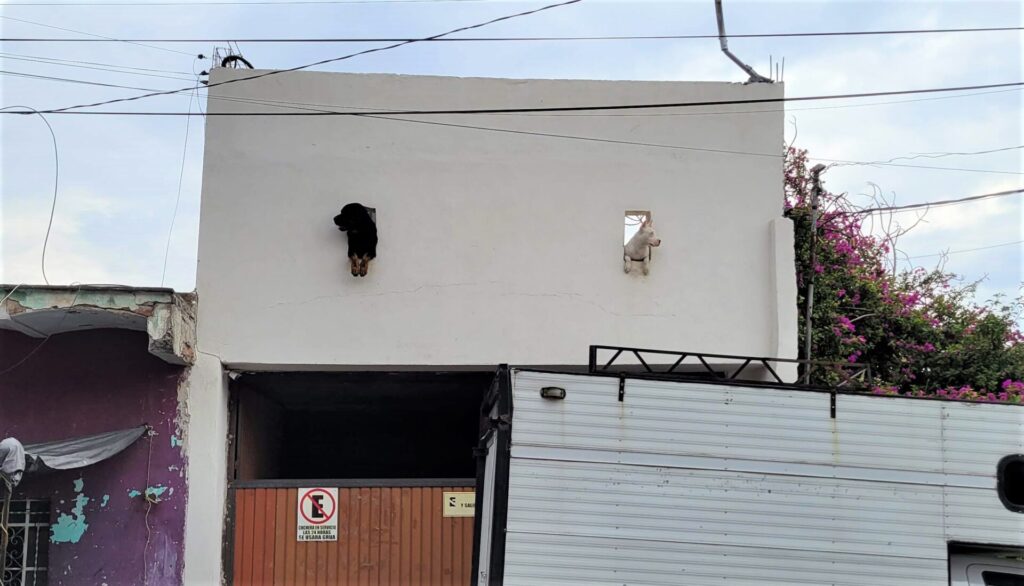
In short, we have no reason to feel unsafe here. The Mexico that’s portrayed on the poisonous 24 hour news cycle is a far cry from the reality most tourists will see. Most Mexican people are extremely warm, welcoming, and friendly. (Even the non-proselytizers.) We constantly receive smiles and greetings on the street. By taking common sense precautions like avoiding gang war hot spots, not walking around late at night, and not flashing wads of cash or expensive jewelry, our risks are relatively minimal. That’s no different than any other place we visit around the world.
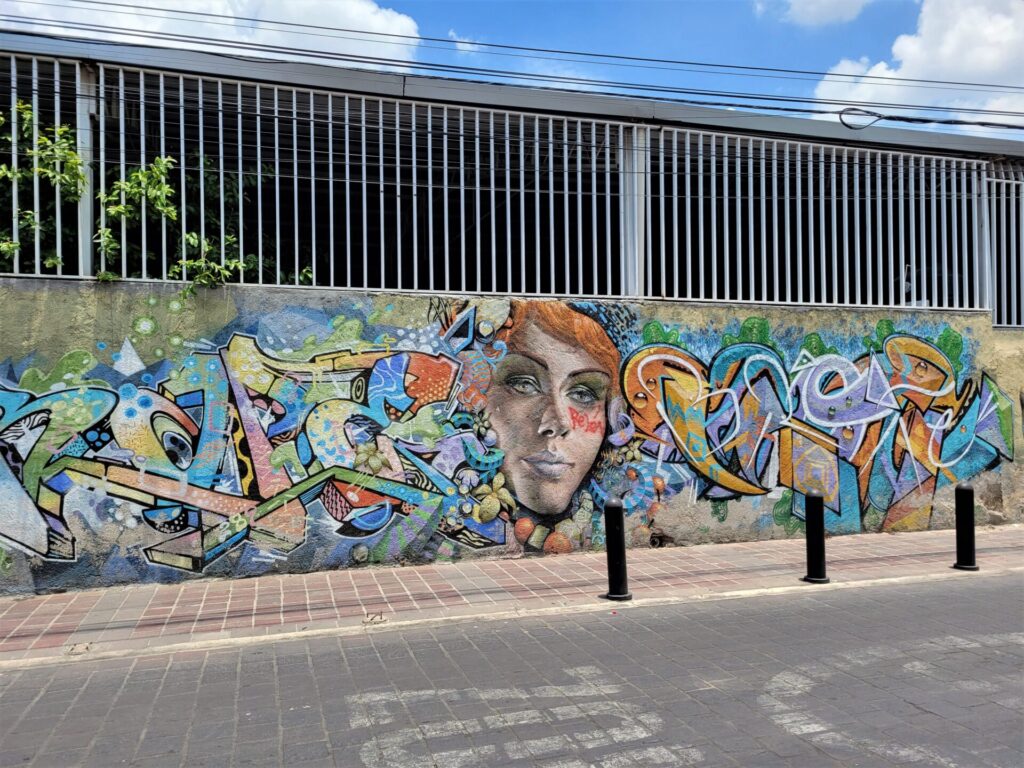
Where We Stayed
We rented a giant three bedroom two bathroom condo just south of the leather district. It was pretty fancy. The kitchen was well stocked and we never tired of having real art on the walls. And as I mentioned before, it has an A/C unit in the bedroom, which was key during the first half of our stay. However, the listing explicitly stated that the A/C was only for use in April and May, and it was not factored into the cost for other months. We tossed and turned through two hot and sweaty nights before relenting and asking for the price. Our host’s reply was to just use it and be comfortable. Should’ve asked on night one I guess!
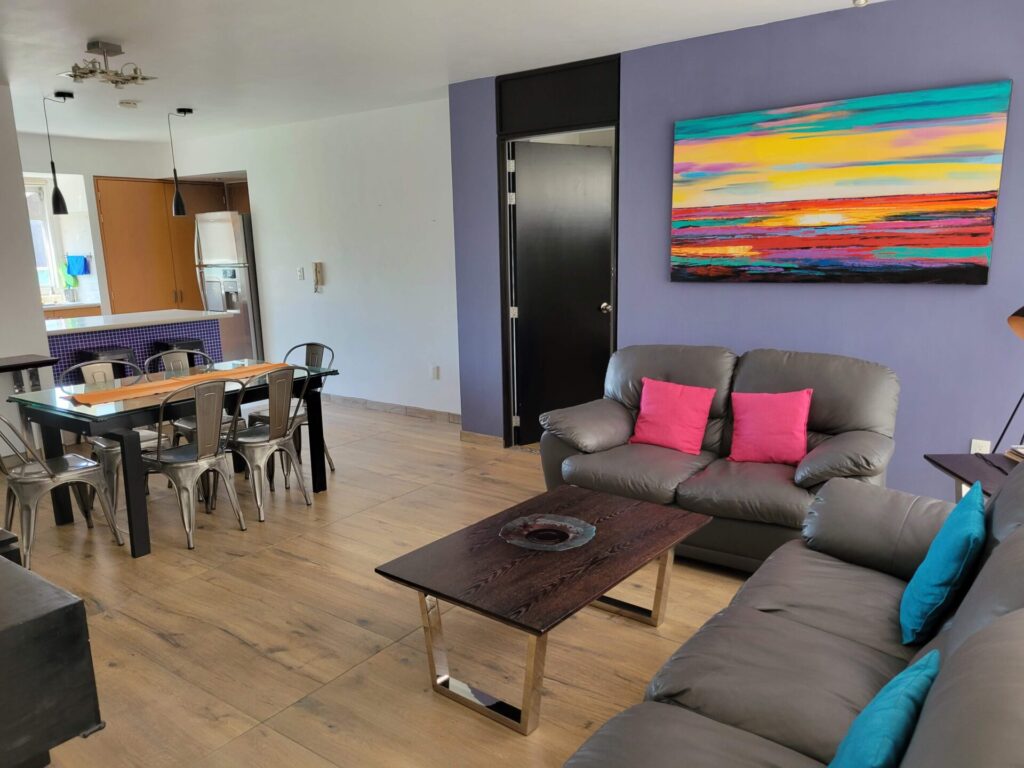
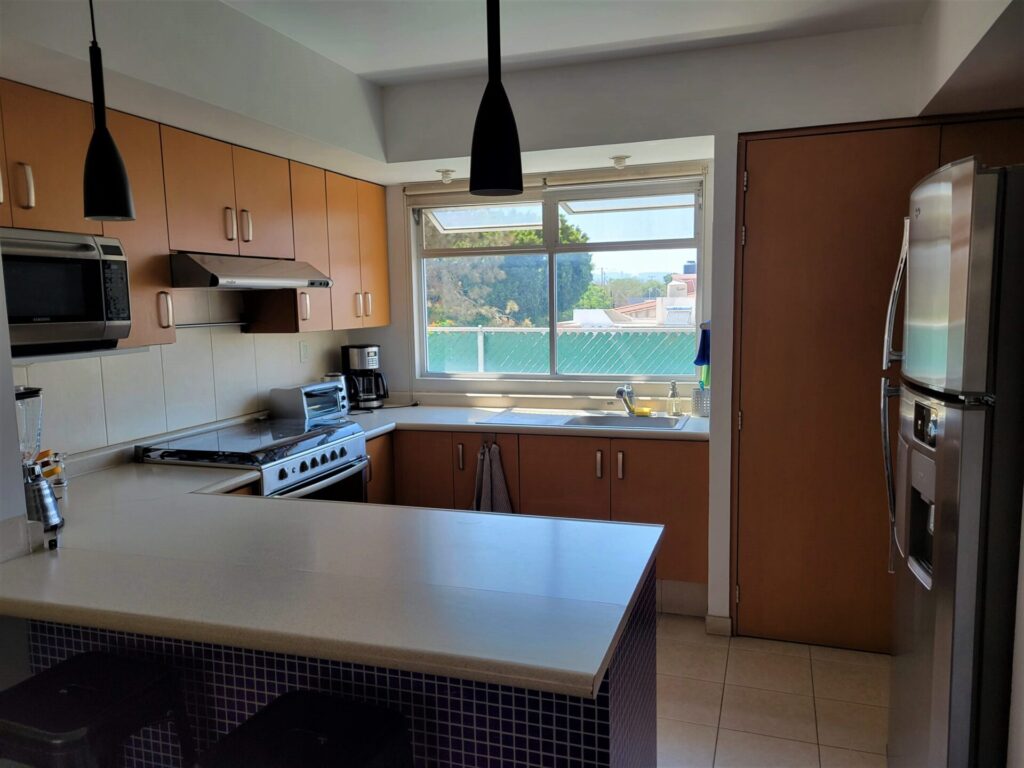
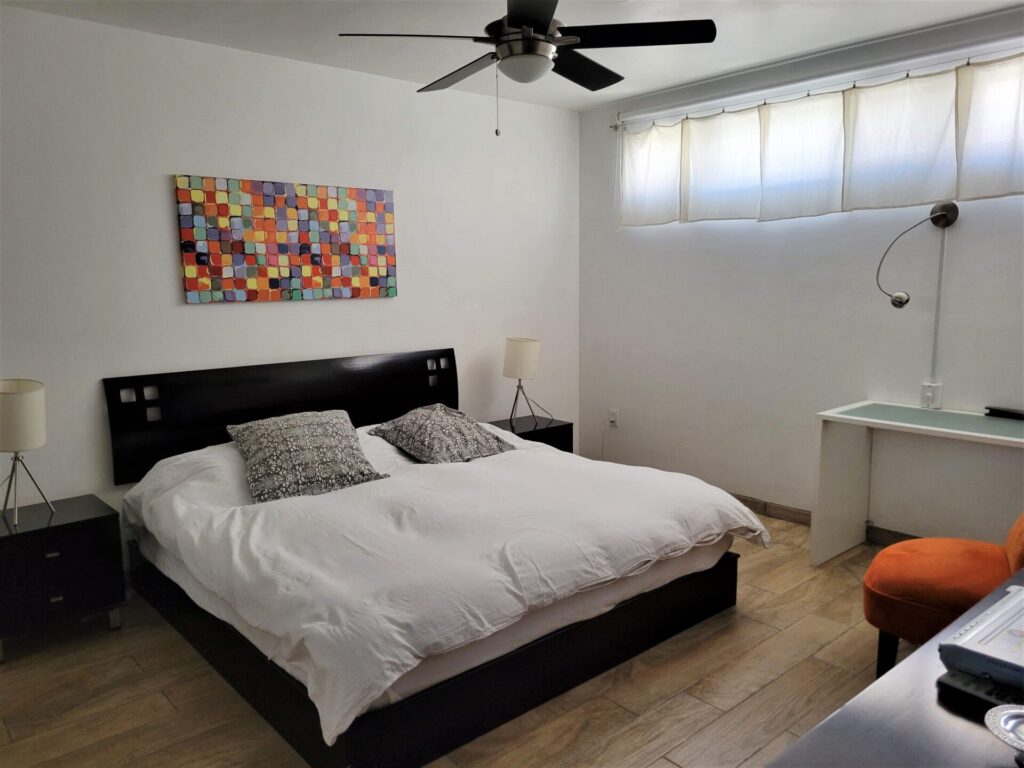
What We Spent
Our total spending might not accurately reflect the cost of living here, as we paid a premium for our giant apartment and also arrived by plane. I would consider León pretty cheap overall, as food is quite reasonable (despite us going hog wild) and the town is very walkable. Even our baseball outing was less than $30 total, including two tickets, bottles of water, and a taxi ride home. In total we spent $2417.41 during our month in León. Adding in our recurring bills for things like insurance and phones brings our total outlay during these 30 days to $2674.47.
Overall we found León to be a bit boring, but an easy place to live. It’s a large city with all of the modern conveniences, but it feels much smaller. At a normal tourist pace, you could see the cathedral and the rest of downtown, peruse the leather district, and catch a baseball game or soccer match (depending on the season) in a single day. Some Spanish language skills definitely make visiting easier, as we encountered few English speakers. But we felt welcome even when butchering the language. If you’re ever in the market for well-priced and unique leather items, or just want to smell them constantly, it would be hard to beat León. We considered it a good jumping off point for our Mexican adventures.
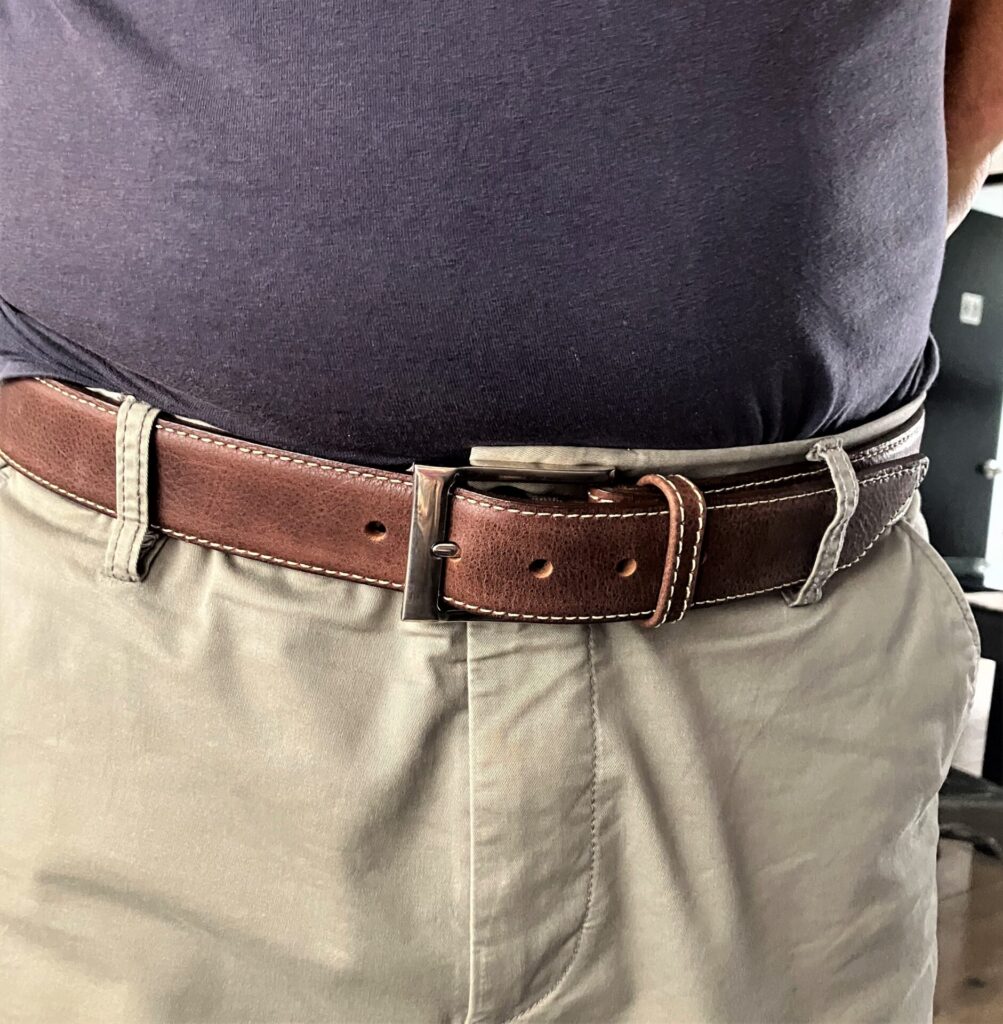
It’s so nice to have you back and read about your adventures!
Thanks Jill!
I have lots of students whose families are from Guanajuato and speak lovingly of the area when the return from visits. One student even brought me back a shirt from nearby Celaya that says “Someone in Guanajuato loves you” in Spanish lol
Hi Alan,
I’m going to keep my eyes open for that shirt!
You cracked me up with the tortillas. The first time I ordered them, I had the advantage of seeing a sign that stated the price per kilo. Without knowing how many tortillas were in a kilo I ordered one kilo. Well, that turned out to be way too many of course😂
I practiced my Spanish on the fly while there. If I knew I was going to the market, I practiced my Spanish a bit before I went. If I was going to the barber, I practiced my Spanish a bit before I went. You get the picture. I would always thank people for their patience in Spanish and explained I needed to practice my Spanish. Of course, when things got too difficult, there was always Google translate.
We loved going to the markets for fruits and veggies. We were even brave enough to buy chicken at the markets and little butcher places. Refrigeration is not the norm, but it always seemed so fresh it didn’t matter. No odor to the Chicken at all unlike the packaged stuff in the grocery stores.
The baseball game looks fun.
Regarding safety, we spent about a year traveling through Mexico and was never threatened by anyone. Not once. The only time we felt a bit nervous about a place was Oaxaca. A few weeks before we arrived, we were reading posts in a Facebook group about people getting mugged by four guys on motorcycles, and it was happening in the middle of the day. There were at least 8 accounts of people mentioning this in the span of about two months. As it turns out, our worries were unfounded. We never had a problem. As you mention, most of the violent crime is cartel related and they typically want nothing to do with foreigners. I feel it’s no less safe than the US. However, using common sense goes a long way.
Not sure where your are going next, but I can definitely recommend bus travel through Mexico. You could put a nice little bus itinerary together in that part of Mexico.
Safe travels guys.
Hi Skip,
Those communication issues are part of the fun, right? I can speak pretty well and have a decent vocabulary, it’s just the listening that’s quite difficult. Hopefully I’ll continue to improve with practice.
We don’t have our whole itinerary planned out yet, but I can definitively state that we won’t be getting on a plane until we leave the country. It’s buses for us.
Sounds a lot like Aguascalientes, which is just up the road. Hope you guys get a chance to check it out!
Hi Bob,
I’ve heard a lot of good things about Aguascalientes. It was in the running as our Mexico starting point instead of León, but apartment inventory and flight schedules gave the nod towards León this time. Unfortunately, we’re headed south from here so we’ll have to save Aguascalientes for another time.
Fantastic post!…I lol’d at the tortilla story…..we have been using weatherspark as part of our travel planning arsenal (still in the US until 11/24), it’s really a great tool,
Love your content, Happy Travels
Ellen
Hi Ellen,
Thanks for the kind words. I’ll give weatherspark a shot. I appreciate the recommendation.
Hola, long lost friends!! Katie, it’s your old Hyatt O’H CSM colleague, Karly shared your blog and I am so envious of your amazing adventures exploring the world. I absolutely love reading about your travels and seeing your great photos! How incredible to be free from the daily grind!! Keep on living your best life!
Hi Joanna,
I’m glad you found us. It’s good to hear from you and we hope you’re doing well.
Thanks for the post. Are the leather shops in the district open on Sundays?
Hi Judy,
Yes, they’ll sell you leather goods everyday of the week.